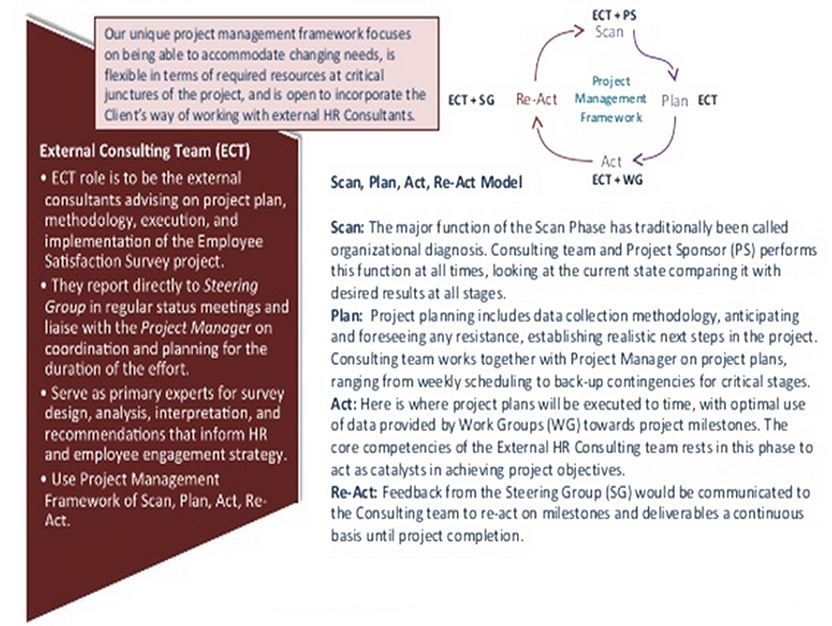
Employee Survey

Are you getting the most out of your employees? A typical employee survey will tell you how motivated people are feeling. But, our research reveals that this is only half the picture.
To be truly effective, employees need to also feel able to “get the job done”, which means being in the right job and with the right tools, support and authority. Our online survey measures employee engagement as well as check levels of “enable-ment” too. This way, you can identify and remove any barriers to performance.
Our powerful online survey tool is a fast and straightforward way to get meaningful insights into employee effectiveness so you can take the right actions to improve it. In addition, you can choose from up to 80 benchmarks, you can clearly see how your organization is performing against competitors.
Employee satisfaction, engagement and commitment can be shown to have a positive impact on your bottom line. Organizations are consequently increasingly using staff surveys to measure employee engagement in an effort to improve business performance.
An essential component of organizational training and development, Employee Attitude Surveys provide a picture of your organizations needs. These surveys can be used to solicit employee opinions on a variety of issues.
The Babelo Group - HR team partners with our clients to develop, conduct and collate Employee Attitude Surveys, which demonstrate that you, the employer, are listening to your staff. Taking action on the findings further demonstrates that your employees’ views are valued and can pay dividends in terms of improved morale and commitment.
Employee feedback is crucial to your organization’s health. Through:
- Employee satisfaction surveys
- Organizational culture surveys
- Employee feedback systems,
You can create a healthy corporate communication that will lead to greater:
- Employee satisfaction
- Employee retention
- Employee loyalty
With this information you'll be able to quantify how well your employees embrace your
organizations goals, values, and mission
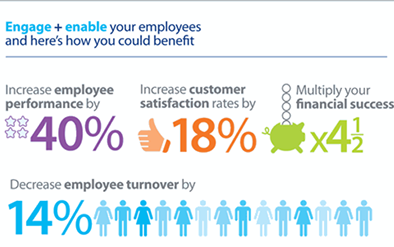
Benefits
- Provide senior management with the insight into your workforce
- Measure high performance
- Determine if you are hiring the right people
- Increase your retention
- Enhance management effectiveness
The Purpose
Analyze employee and organizational needs through the deployment of an internal survey, and action planning to support the organization's business and human capital objectives in current and future scenarios
Objectives & Scope
- Develop a reliable and valid employee survey
- Deploy and manage the survey process
- Understand current employee satisfaction levels compared to previous years ' findings
- Uncover the priority organization-wide and departmental areas for improvement
- Conduct deeper investigations of priority areas
- Satisfaction report and recommendations
- Explore benchmark data
- Plan action-based strategic implementation
Employee Satisfaction versus Employee Engagement Survey
Employee satisfaction is the extent to which employees are happy or content with their jobs and work environment, while Employee engagement is the extent to which employees feel passionate about their jobs, are committed to the organization, and put discretionary effort into their work.
Employee satisfaction or job satisfaction is, quite simply, how content or satisfied employees are with their jobs. Employee satisfaction is typically measured using an employee satisfaction survey. These surveys address topics such as compensation, workload, perceptions of management, flexibility, teamwork, resources, etc.
These things are all important to companies who want to keep their employees happy and reduce turnover, but employee satisfaction is only a part of the overall solution. In fact, for some organizations, satisfied employees are people the organization might be better off without.
Employee satisfaction and employee engagement are similar concepts on the surface, and many people use these terms interchangeably. Employee satisfaction covers the basic concerns and needs of employees. It is a good starting point, but it usually stops short of what really matters.
Types of Employee Survey
Employee Satisfaction Surveys
- Provide the opportunity to stay connected with your employees’ needs, wants, and perceptions.
- Determine how your employees truly view your organization, their position, the management team, and your customers.
- BG customizes survey tools using online surveys, paper surveys, phone surveys, or any combination
- Provide you with the feedback you need to hire, train and retain loyal, long-term employees.
Organizational Culture Surveys
- Allow you to determine if your management and employees are working toward and “living” your organization’s values, mission, and customer focus.
- BG develops culture surveys to help you define your existing culture, determine existing culture’s alignment to goal and create path to successful culture change.
Employee Attitude Surveys
- Assess employees’ emotions and feelings within the workplace.
Employee Opinion Surveys
- Discover views and beliefs held by employees.
Employee Engagement Surveys
- Measure how engaged, eager, and dedicated employees are with respect to their job, coworkers, management, and the company.
Employee Performance Appraisal
- Management evaluates and provides feedback on employee job performance, including steps to improve or redirect activities as needed.
360 Survey
- Examine the employee from multiple viewpoints, including coworkers, supervisors, managers, subordinates, vendors, and customers.
Organizational Assessment Surveys
- Measure the key strengths in a company, from a global perspective.
Employer Improvement Surveys
- Give employees the chance to provide constructive criticism about their employer. Employers use this information to strategize ways to improve their organizational processes, and identify areas of weakness.
Employee Exit Surveys
- Provide valuable insight into workplace relationships, training, opportunities for growth, and work processes within an organization.
Employee Benefits Surveys
- Regularly survey employees regarding benefits satisfaction can help organizations tailor benefit plans to their employees.
Professional Development Surveys
- Ask employees if they feel they’ve been given the proper training and development tools to advance their professional career goals in the workplace.

- A snapshot of your employees’ perceptions at any given time
- Valuable tool - important to develop a continuous employee feedback system
- Keeps you in communication with your employees and their changing perceptions, wants, and needs.
- Employee satisfaction can decrease instantaneously with changes in leadership, corporate decisions, or added tasks.
- A well-developed employee feedback system will prevent small issues from ballooning, keep rumors to a minimum, allow employees to share their frustrations, and encourage contribution of ideas for improvement.
- The continuous nature of the feedback system provides comparative data, a long-term look at successes and failures, and a record of both positive and negative trends
Employee Survey Readiness Assessment
Conducting an employee survey without proper follow-up after the survey can be worse than never doing the survey in the first place. When you ask employees for their opinions, you set the expectation that you will listen to and take action on the results.
Before initiating your employee engagement survey, review the following questions to determine whether you are prepared to confront the things that may be necessary after the survey is complete.
You don't necessarily need to answer "yes" to every question, but you should feel that you have an adequate level of overall preparedness before proceeding with the survey. Consider the things listed below as best practices, but also realize that some of these things might not be suitable for your organization.
Questions for Employers
Do you know why you are conducting an employee survey?
The question may seem obvious, but it is worth asking. If you are unsure of the answer, perhaps your senior leadership team needs to sit down and discuss.
Will you share at least some of the results from the survey with
employees?
You don't have to decide now exactly what you will share, but you should plan to share at least some of the survey results (positive and negative) with all employees.
Have you outlined a plan for how you will share the results of the
survey with employees?
Do you have a timeline?
Have you communicated these things to employees?
If employees trust that you will take action on the results, and demonstrate openness and clear communication at the outset, they will be more willing to respond to the survey and more candid in their responses.
Are your most senior leaders committed to this process?
The top leader (e.g. President/CEO) and HR will need to hold other senior leaders accountable for changing behavior and supporting initiatives. The entire leadership team will need to set the example for the rest of the organization. This is critical.
The top leader will need to set aside at least 1-2 hours per month to monitor results and provide high-level guidance
Functional leaders and other managers will need to devote at least 2-4 hours per month to communicate and support change initiatives.
HR will need to spend 6-12 hours per month on communication and administration of the process
In addition to the above, analysis of your survey results, setting priorities, and developing an action plan could take 1-2 days or more, depending on the size of your organization and how much time you are able to spend.
Are your senior leaders prepared to spend the time necessary to
make it work?
You should at least consider the possibility that this might be necessary or beneficial, depending on your situation.
Are you prepared to bring in external help (consultants) to help fix
problems that you might not be able to fix with existing internal
resources?
Communication Plan
Before launching your employee survey, the Barbelo Group will help you communicate your organization's plans, goals, and intentions with senior leaders, managers, and employees. These communications are separate from the actual invitation to fill out the survey, and they should take place before the survey invitation is sent out.
Communication and trust are two key topics related to employee engagement. You have the opportunity to set a positive tone in these areas before the survey even begins. Moreover, communicating and establishing trust will also increase the survey response rate as well as the candor of the responses.
Employee Survey Implementation Plan & Milestones
Before launching your employee survey, you should have a plan and general timeline in place for the entire process from start to finish. Conducting the survey is only one part of this process.
Your plan should cover all phases of the project, as outlined below. Make sure you have the necessary resources lined up and that you communicate with employees and other stakeholders at every stage of the process.
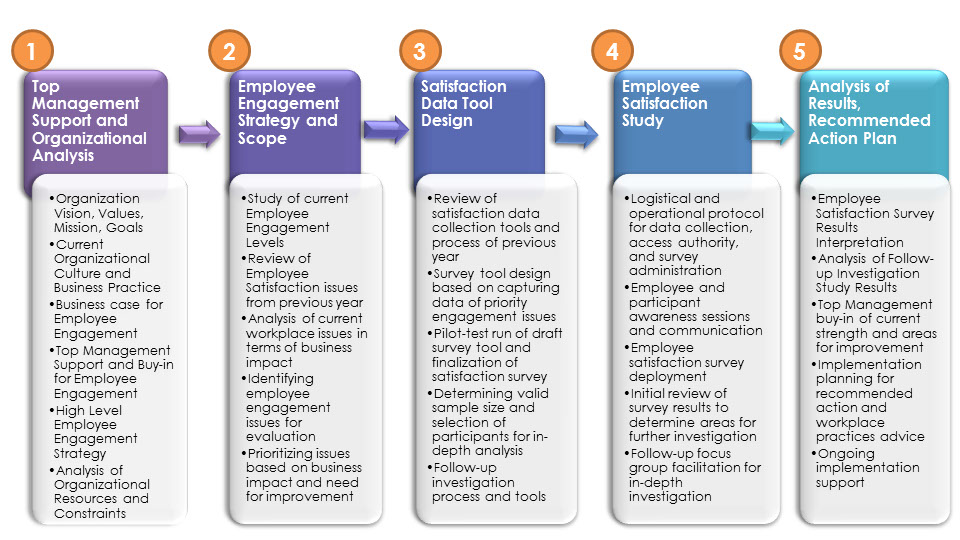

Top Support and Organizational Analysis
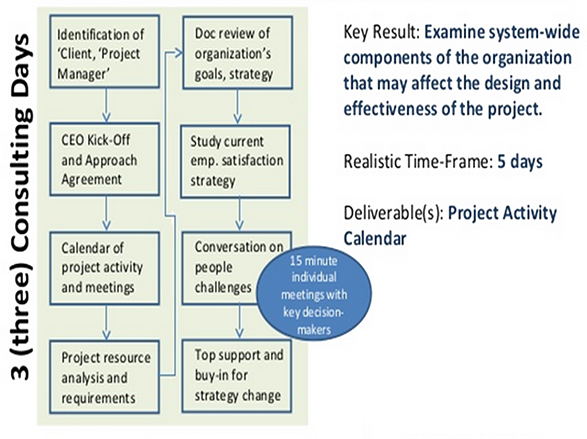

Satisfaction Strategy and Scope of Data
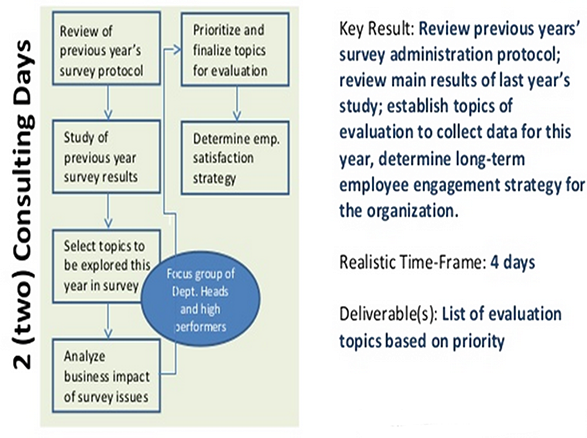


Satisfaction Strategy Data Collection Tool Design

Satisfaction Strategy Data Collection Process


Follow-up Investigation of Priority Issues

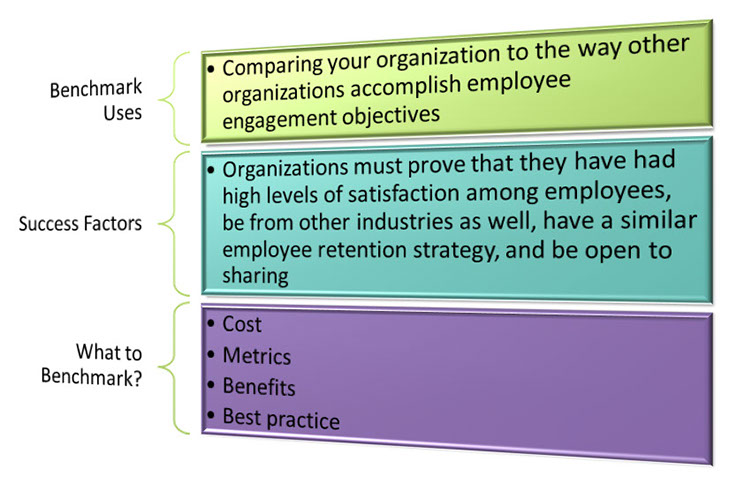
Benchmarking
Benchmarking
Options
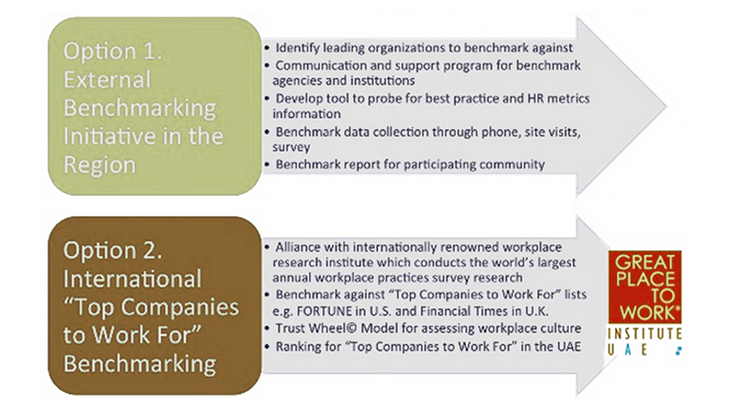
Project Management Framework
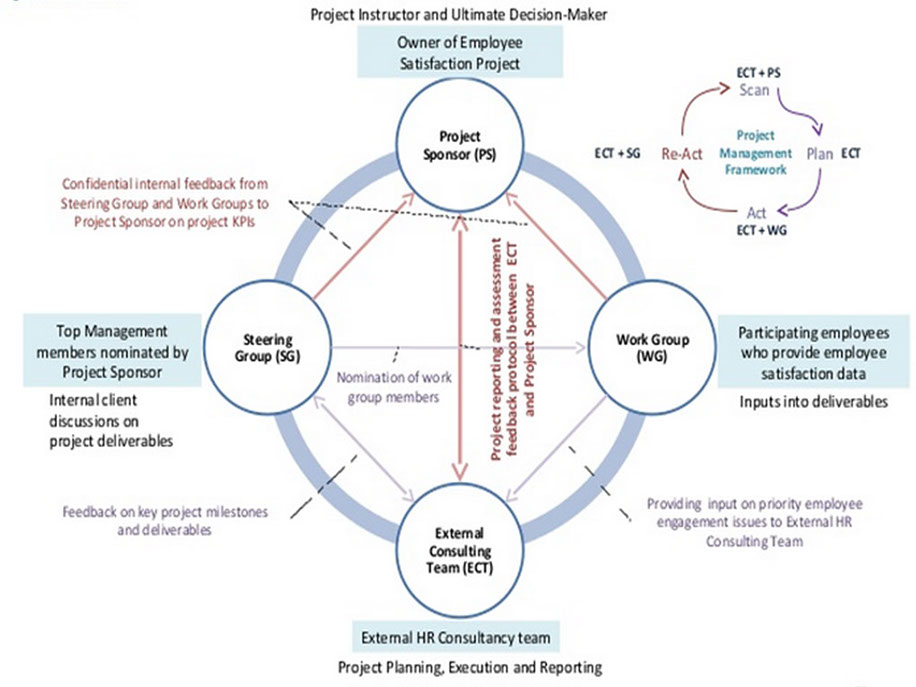
Roles of Project Team
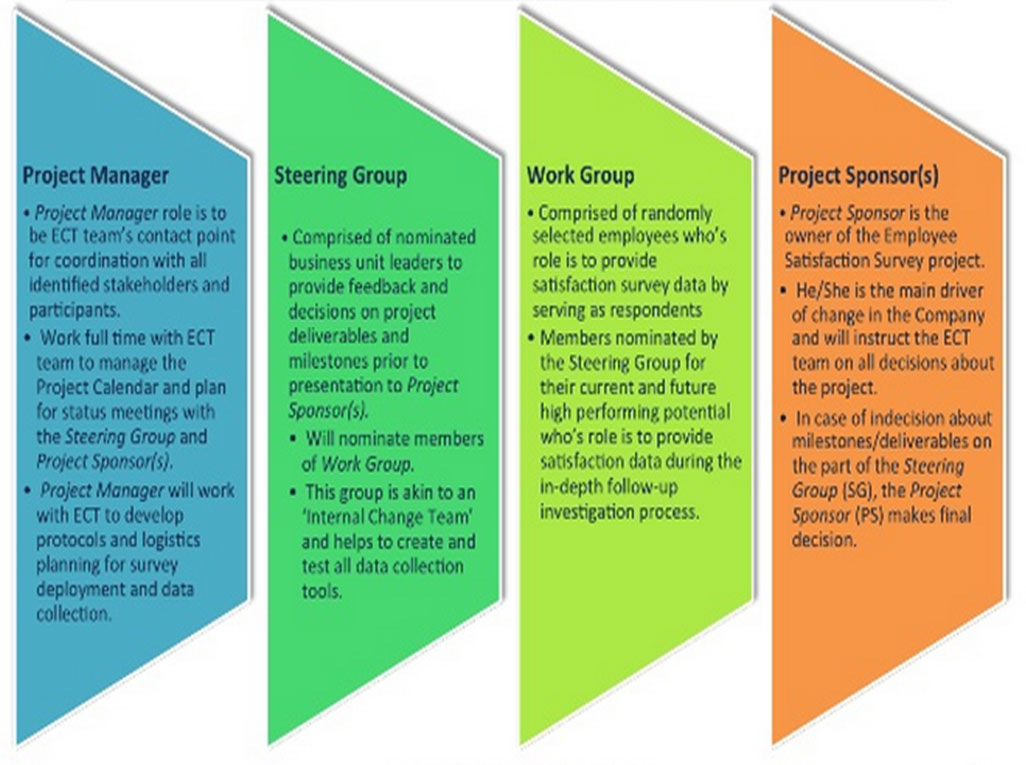
Project Management Model










